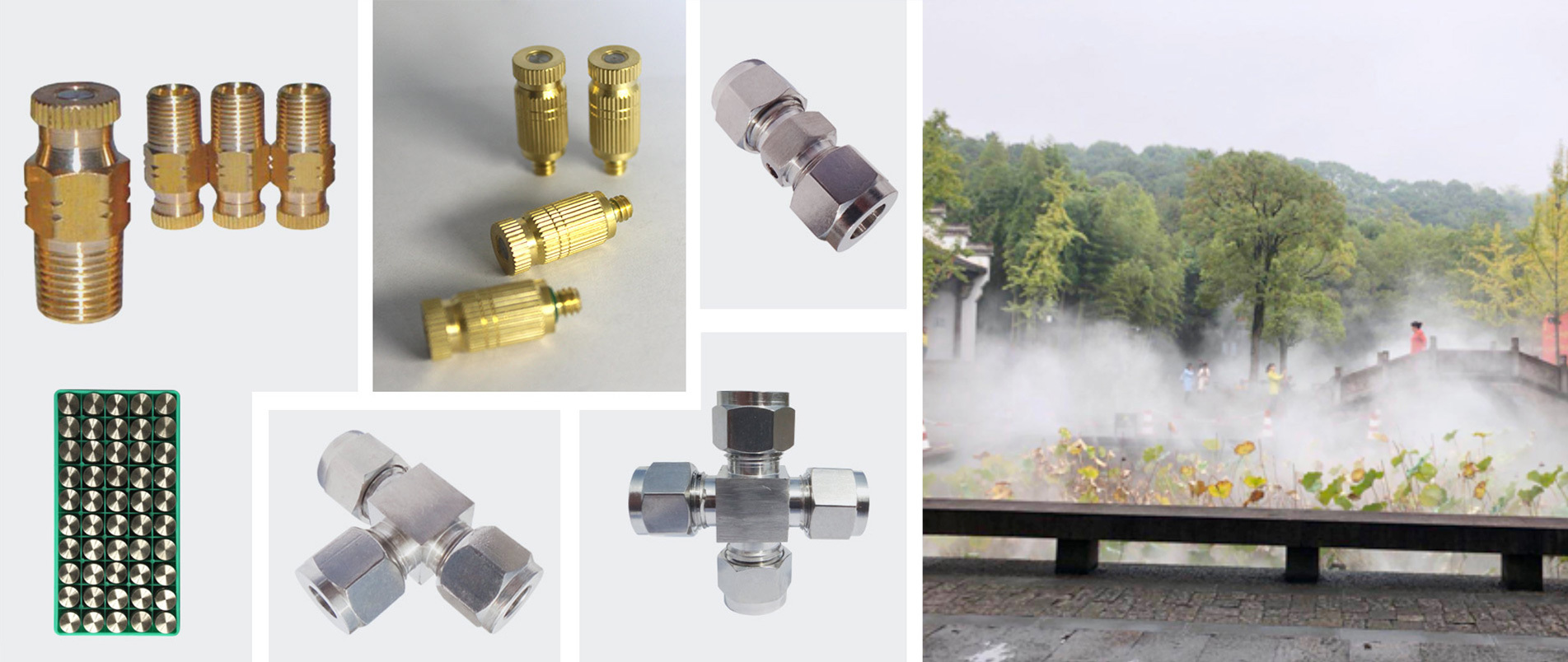Explanation of atomizing nozzle mechanism
Time:
2022-11-23 14:47

The atomization process of the nozzle is mainly controlled by four forces, namely aerodynamic resistance, viscous force, liquid surface tension and inertial force. The interaction between these four forces makes the continuous liquid injection split and broken. The atomization process of the nozzle is generally divided into jet atomization process and liquid film atomization process.
Rayleigh analyzed the mechanism of jet breaking in 1876. He used the small disturbance method to analyze the conditions required for the breakup of low-speed jets, and believed that only when the symmetric disturbance wave was comparable to the jet diameter could the jet break. Tyler studied the relationship between jet breaking and disturbance wave length by measuring the frequency of jet breaking, and verified Rayleigh's theoretical analysis.
Weber developed a more general low-speed viscous jet breaking theory, proposed that there is an optimal disturbance wave length for jet breaking, and gave its expression. By analyzing the interaction of various forces in the process of liquid atomization, he believed that the friction of aerodynamic force on the liquid and the high-speed flow inertia of the liquid itself were the important reasons for the breakup of liquid droplets. When the effect of aerodynamic resistance is greater than the surface tension, the liquid will be atomized, and the liquid droplets will peel off on the liquid surface. On this basis, he proposed a dimensionless constant - Weber number, and gave critical Weber number, critical liquid velocity and other important index parameters for atomization.
Haenlein verified Weber's conclusions through experiments, and divided liquid jet atomization into four types of processes: droplet formation without air influence, droplet formation with air influence, droplet formation caused by jet fluctuation, and complete breakup of jet, namely atomization. Ohnesorge sorted out the data according to the importance of the jet force, and introduced the dimensionless Ohnesorge number to divide the jet breaking process into three stages:
(1) In the low Reynolds number section, the Rayleigh mechanism controls the crushing process:
(2) In the middle Reynolds number section, jet breakage is controlled by jet disturbance;
(3) At high Reynolds number, the atomization process is completed within a short distance from the nozzle outlet.
This classification is widely cited. Recently, in order to solve the problem of uncertain states in Ohnesorge classification chart, Reitz proposed the following four kinds of broken states by analyzing the test data of diesel engine spray: Rayleigh shaped broken; Primary wind-induced crushing; Secondary wind-induced crushing and atomization.
Fraser and Eisenklam have defined three liquid film breaking modes: edge falling, surface fluctuation and liquid film perforation. They believe that when the liquid film breaks, it first changes into a liquid belt, and then continues to break into droplets. The droplets formed by the edge falling off still move along the direction before crushing. The droplet formed by liquid film perforation has good uniformity, while the droplet size formed by surface fluctuation changes greatly. For the nozzle with liquid film atomization, the three crushing modes may occur at the same time. In the 1950s, Dombrowski and Fraser deeply studied the breaking process of liquid film through a large number of experiments. They found that the liquid belt is mainly caused by the perforation of the liquid film. If the hole is caused by air friction, the liquid belt will break very quickly; if the hole is caused by turbulence in the nozzle, the liquid belt will break very slowly. They concluded that the liquid film with high surface tension and high viscosity is the most difficult to break: the density of the liquid has little effect on the breaking of the liquid film. York et al. conducted theoretical and experimental studies on the fragmentation mechanism of planar liquid film, and concluded that the instability between continuous phase and discrete phase interfaces and the formation of surface waves are the main factors affecting the fragmentation of liquid film into droplets.
It can be seen that the above mechanism analysis cannot be separated from the support of experiments. Because of the complexity of the atomization process, almost all the theoretical research results so far are empirical and semi empirical.
Recommended information



